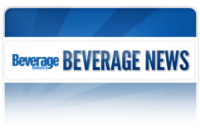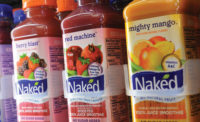Whether it’s videos, mobile apps or social media, the digital world has become fully integrated into the lives of many consumers. Although still a curious area for marketers, digital marketing has benefited the beverage industry, notes Chris Lowery, president and chief strategist at Chase Design Group, South Pasadena, Calif.
“Beverage has been ahead of the game in digital marketing due to constraints in other communication, especially the liquor industry,” he says. “As a result, the level of digital outreach has exceeded many other consumer product sectors.”
Seth Hillstrom, executive director at Beverage Marketing Association, New York, notes that the impact that digital communications have had on marketing cannot be overstated.
“When zooming out and considering the industry more holistically, the impact of digital communications couldn’t possibly be overstated,” he says. “It allows our brands to identify, engage with and even give a voice to their most passionate supporters. It helps brands tell their story in formats that go ‘deeper’ than the 30-second TV spot.”
In order to build a successful digital campaign, marketers should find the right audience and invest wisely, Hillstrom says.
“We’re seeing more dynamic teams coalesce around who they’re marketing to rather than what marketing function they serve,” he explains. “The result: seamless programs that dip in-and-out of consumers’ lives, whether they’re checking Snapchat, attending a concert or standing in a store.”
The millennial impact
Driving much of the interest in digital content, millennials are one of the main target demographics for many digital marketers. According to Chicago-based Mintel’s June 2017 “Marketing to Millennials” report, the demographic comprises 24 percent of the population and are prime consumers.
“Even as they age, millennials are clearly still at the forefront of trends, with data showing they are more likely to agree that social media, tracking of personal data, remote working arrangements and personalized advertisements have a positive impact on their lives,” it states. “The data continues to support the recommendation that marketers trying to gain acceptance for new business models, new technologies and even new communication strategies may want to start with a millennial target. Although a relatively small base of millennials are on board with each of the trends evaluated, this generation is significantly more favorable than the average. As millennials age, they may become more regimented in their habits, eschewing new trends for established routines, but at this point millennials still provide a good testing ground.”
So social
Among the trends for which millennials are known to have influenced is social media. In its report, Mintel notes the impact that the demographic has had on the digital communications platform.
“At its core, social media started as a way to connect with friends online. However, in the hands of millennials, social platforms provide a variety of other functions,” it states. “Millennials are more likely than the average to use social media to connect with brands and improve their career or job prospects. Younger millennials (23-30) are the segment driving these behaviors, reflecting a commonality with older members of the iGeneration.”
Chase Design Group’s Lowery notes that digital marketing is an effective way to reach younger consumers.
“Because younger consumers are far less print-friendly, digital has a more effective reach,” he explains. “In addition, the ability to deliver current and relevant lifestyle content is a huge plus.”
According to Chicago-based Euromonitor International’s May 2017 “Digital Consumer in the US” report, the top social platforms are YouTube, with 244 million monthly active users in the United States, and Facebook, with 240 million users, followed by Instagram and Twitter.
“No longer can brands just be present on social media, but rather they must continuously engage with consumers to be successful,” the report states. “The integration of targeted content and marketing as well as evolution of seamless path-to-purchase options, such as buy-now buttons, allow brands to directly influence consumer purchasing behavior to drive growth of remote purchases.”
The impact of social media on consumers’ lives can be seen in many ways. One of the most notable ways social media is making that impact is through the ability for consumers to speak to any brand. However, Beverage Marketing Association’s Hillstrom notes that it’s also important for brands to listen to consumers.
“Social media has created a communication hub that has given rise to [a] completely new brand/consumer dynamic. Going a step further, it’s given consumers something they’ve never really had before: a voice,” Hillstrom says. “In fact, consumers’ voices are now so powerful that one misstep and even the sturdiest brands will be brought to their knees, by a number sign (#), really. The smartest brands are the ones who chose to take a knee and listen.
“… In keeping with the theme of brands being held accountable by the social-sphere, we greatly see the impact of consumer voice on marketing strategy,” he continues. “Brands are looking more than ever to tap into the power of the positive sentiment that comes with socially responsible messaging. They must also scrutinize every word they put out to the world.”
He notes that social media platforms provide two main advantages to marketers.
“Digital communications platforms offer two obvious advantages over analog ones. First and foremost is two-way communications,” Hillstrom explains. “Consumers can talk to and about brands, and brands can listen, react and continuously improve. Further, they allow for a level of precision and personalization that could never be matched in the ‘nondigital’ world.”
However, measuring the effectiveness of digital marketing can be a difficult feat, according to experts.
“Impact is difficult to measure for any digital outreach, but since the majority of eyeballs have moved to small screens it is a must for any marketing effort,” Chase Design Group’s Lowery says. “The effect of social media and apps on consumer consumption is significantly in question. For brand managers, the consistent delivery of [a] new product or brand content has been given great importance in the past few years, but results have been inconclusive.
“… Digital is only growing as other communication channels shrink,” he continues. “Much of the data in terms of effectiveness is inconclusive. We need better success metrics in order to judge good and bad work and media planning.”
Although its overall impact is unclear, social media still is important, and quality content can help brands stay top of mind, Lowery adds.
“No different than in other industries, a successful campaign is memorable, sharable and ownable,” he says. “… In the digital world, media overload can only be overcome by user affinity, which equals sharing, which equals reach and penetration.”
Hillstrom notes that digital marketers should remember what the consumer is looking for from brands online.
“It’s not about being on a platform, channel or technology for the sake of meeting your fans there,” he explains. “It’s about making consumers’ lives easier, making them laugh, sharing your story — that’s what consumers want. Show that you care about their story, and maybe they’ll care about yours.” BI





